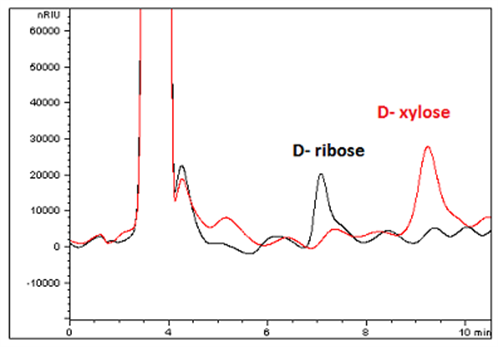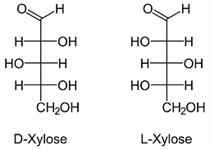Ribose and Xylose - AppNote
September 1, 2016
/
/
/
/
/
Sugars can be difficult to analyze by HPLC due to their polarity. Columns with amine ligands are often used for retention of simple sugars like Ribose and Xylose, but they have a number of drawbacks. The amine group can form Schiff bases with Aldehydes in the sample, resulting in irreversible deactivation of the ligand’s retention functionality.
Poor robustness and column life have been reported for Amine columns for this reason. The Cogent Amide Column avoids this problem because its ligand is less chemically reactive than an amine, while still obtaining good retention and separation of the two sugar analytes.



Attachment
No 353 Ribose and Xylose.pdf 0.4 Mb Download File
Poor robustness and column life have been reported for Amine columns for this reason. The Cogent Amide Column avoids this problem because its ligand is less chemically reactive than an amine, while still obtaining good retention and separation of the two sugar analytes.


Peaks:
1. D-Ribose
2. D-Xylose
Method Conditions:
Column: Cogent Amide™, 4 μm, 100 Å
Catalog No.: 40036-10P
Dimensions: 4.6 x 100mm
Mobile Phase: 95% Acetonitrile / 5% DI Water / 0.1% Triethylamine (TEA) (v/v)
Flow Rate: 0.5 mL / minute
Detection: Refractive Index
Injection Volume: 5ul
Sample Preparation: D-Ribose and D-Xylose reference standards (3 mg/mL) in diluent of 50% Acetonitrile / 50% DI Water / 0.1% TEA (v/v)

Attachment
No 353 Ribose and Xylose.pdf 0.4 Mb Download File
